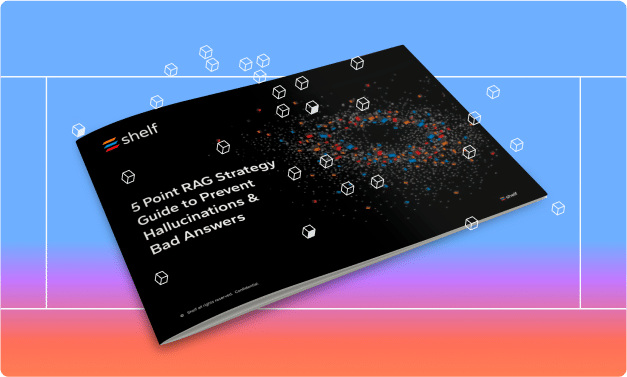In our first entry in our series of future-proofing for artificial intelligence (AI), we discussed the inevitability of AI disruption and how your organization should prepare to manage change. In this second entry in the series, we focus on what your AI strategy needs to manage risk, evaluate ROI, and prepare for AI’s disruption.
Understanding Risk in AI Disruption:
Artificial intelligence (AI) and the automation of business tasks have similar risks as any technology innovation. A successful implementation of innovation can provide a competitive advantage leading to higher revenues, decreased costs, or superior products or services. The risks include compliance concerns, uncertain return on investment (ROI), or internal disorganization.
The potential successes may not appear to outweigh the potential risks, but waiting to see how the market settles is the biggest risk of all. “Wait and see” is not the tactic that decides the leaders of industries. Your business needs a clear AI strategy for what will change within your business, the costs, and the potential value. We’ve focused on some of the risks related to adopting AI or choosing to automate parts of your business. To assess your readiness for this shift in your business, consider the following factors:

Short-term ROI and Long-term Potential:
Adopting new technology always has a cost. If it isn’t a literal cost in the form of paying for a service or product, then the cost shows up in time spent researching best practices or implementing new standards within your organization. You need to understand what exactly is the cost of this disruption to your organization. This could be as straight-forward and internal or more hypothetical and external.
For example, if your organization produces written materials such as market research then your immediate cost for adopting generative artificial intelligence (GenAI) is implementation. It takes time for writers to adapt their habits. In the transitional period your business may have to manage new challenges. Your content may need to be fact-checked more so that proofread for grammatical errors. These transitions have a cost. However, an external cost might be your organization’s loss of market position from not adopting GenAI. Competitors may be able to churn out more content, expand into more markets, and serve more clients because they moved first on the opportunity. This is part of the reason why “timing is everything” has become general wisdom for business operations.
Your organization needs to evaluate the short-term gains and long-term potential of adopting artificial intelligence before committing to an AI strategy. Every industry can figure out the ROI of a new investment. At Shelf, we’ve guided companies by providing a formula for the value of knowledge management — a field that otherwise might not have obvious metrics such as “sales” or “projects completed.” Knowledge management is integral to understanding the value and success of GenAI across different industries.
Review your organization’s key performance indicators (KPIs) and anticipate metrics that could indicate the potential of new opportunities or identify challenges before they take over the process. Your organization needs clear indicators of how and when investing in AI will start to show results. Alternatively, you can create indicators of when refusing to invest is starting to weaken your position in the market. Whatever benefit or harm can be experienced by your organization can be quantified and that needs to be established and presented internally.
Flexible Budgeting and Partnerships:
It’s easy to get tunnel vision when your own organization faces disruption, but it’s important to remember the rest of the industry is getting disrupted as well. The partnerships you’ve relied on and budgets you’ve worked with for the past few years may change dramatically as a result of the disruption. This particular problem is more pronounced with GenAI since seemingly every company from Grammarly to Amazon is radically changing their product offering based on this technology. Even if your business model stays the same, everything around you may change.
In other words, the product you use for the main thrust of your business may quickly become not competitive compared to others who lean into GenAI solutions. You may also discover a new product offering for your own business which shifts what industries your business model focuses on. It may also be the case you’re developing an GenAI-based product but some parts of the new product work better than others. This could open the door to a cooperative relationship with what would typically be a competitor because your products compliment one another (but don’t take this “coopetition” for granted, they’re trying to eliminate you just the same as you try to eliminate them).
Your organization may need to implement flexible budgeting models in anticipation of this change. Prepare for uncertainties by creating financial reserves intended for fast-tracking strategic investments as needed. Perform a review of your current partnerships or potential “coopetition” with other organizations in your industry. Most of all, expect movement within the marketplace. Everyone else is reviewing their partnerships, so this could be an opportunity for your own organization. Be mindful of talent moves. Especially when it comes to technical fields where top talent may be poached to build out a new team at organizations aggressively leaning into new technology.

Risk Assessment Strategy and AI Innovation:
One of the greatest defenses to disruptive technology is a leadership team with comprehensive understanding and ability to perform risk assessments. A leader with technical expertise will be able to identify nitty-gritty details of implementation such as a Director of IT or Head of Technology. However, most people know from experience that new technology isn’t challenging because of the technology but because of how people utilize it (or fail to utilize it). This requires innovative problem-solving from leaders who are familiar with their own workforce and how to empower it to use new tools.
A unique risk factor for AI and the automation of business tasks is its exposure to compliance concerns. In the United States, there have been multiple efforts from different branches of government to provide guidelines on artificial intelligence but these may lack the specificity wanted by legal counsel. These concerns have been somewhat mitigated by tech companies pledging to defend organizations sued for using artificial intelligence, but that doesn’t resolve the inherent risk. Your organization will need to assess the value of implementing AI into use cases that may pose legal risk.
Whether the risk is technical, operational, or legal, it’s important to curate an internal leadership team assigned to managing your AI strategy and your business’ transition. Within larger organizations, this may be a strike team of positions granted the latitude to change course quickly as the market develops. For smaller organizations, this will likely involve many of your senior positions.
AI Strategy Focused on Risk and ROI
Our first entry focused on preparing for change which should have you positioned to make critical decisions relating to the risk and disruption that comes with change. Identifying short-term ROI with long-term potential can clarify the priorities for your organization. Implementing flexible budgets and partnerships will give you the freedom to adapt as the technological disruption unfolds across the market. Finally, assembling a leadership team to identify and respond to risks — whether they are technical, operational, or legal — will position your organization to mitigate risk while maximizing integration opportunities.
What could those opportunities include? Subscribe to our blog to get an update when our final entry in this series is published. We’ll focus on how to build your organization’s readiness to change business conditions to benefit you.




